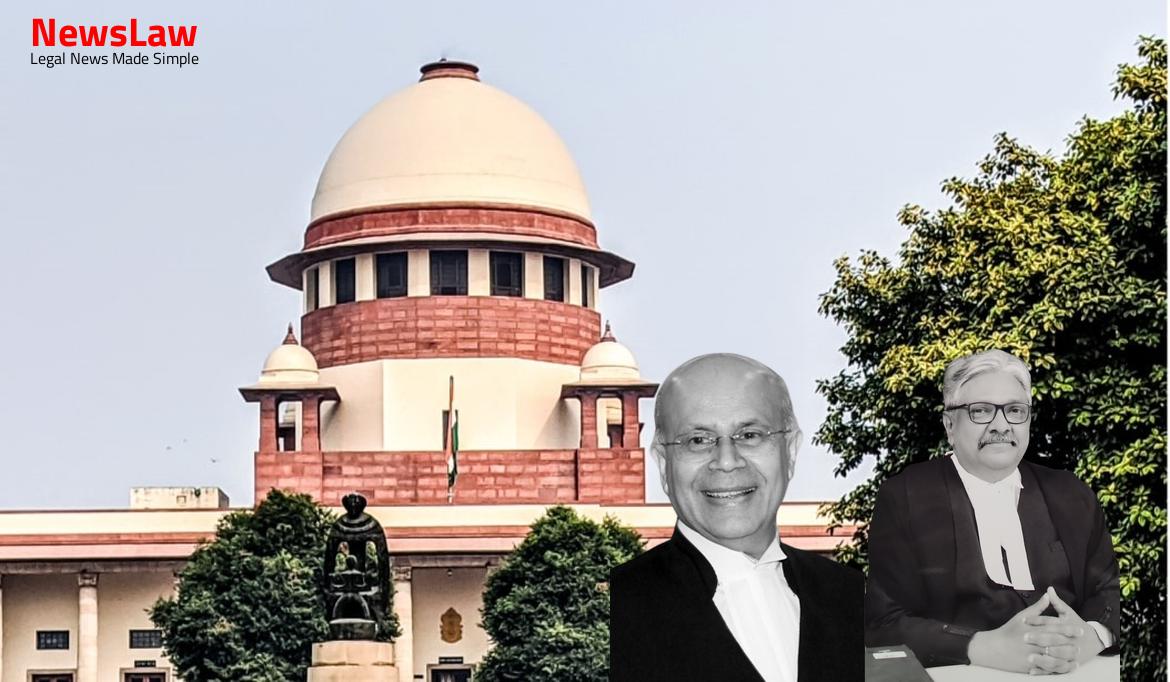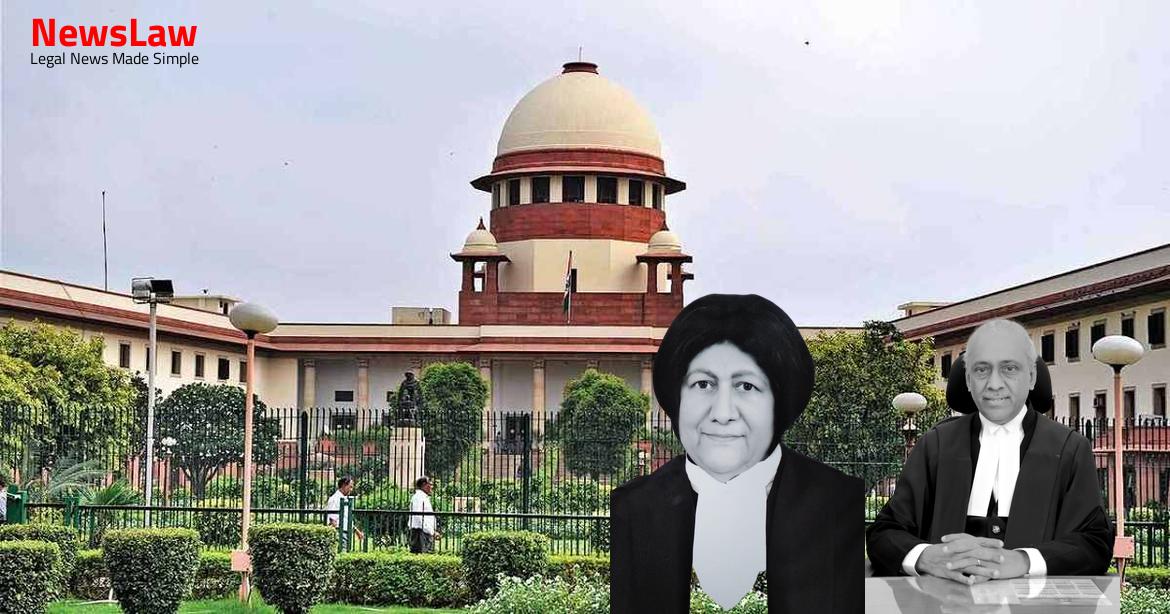Explore the in-depth legal analysis surrounding the transfer of winding up proceedings to the National Company Law Tribunal (NCLT). The court’s examination of this matter provides valuable insights into the complexities of corporate law and the interplay between different legislations. This case summary focuses on the judicial scrutiny and considerations involved in such transfers, highlighting the significance of legal interpretations in this domain.
Facts
- Respondent company issued 17 post-dated cheques for the supplied goods.
- Winding up petition admitted on 27.08.2018, OL appointed as provisional liquidator.
- No payments received despite statutory notice issued on 15.06.2016.
- Cost of publication of citations to be in specified newspapers and Delhi Gazette.
- Petition admitted, Official Liquidator appointed as the Liquidator.
- Applicant bank initiated proceedings as the respondent company failed to pay outstanding dues.
- Petition filed under sections 433(e) and (f), 434 and 439 of the Company Act, 1956 seeking winding up of respondent company.
- Official Liquidator to value all assets and seek police help if necessary.
- Listed for the next hearing on 09.01.2019.
- Division Bench of the Delhi High Court upheld the Single Judge’s order dated 14.01.2019 transferring a winding up proceeding to the NCLT.
Also Read: Legal Analysis on Physical Ability in Rape Case
Arguments
- Jaipur Metals (supra) and Forech (supra) cases clarified that independent proceedings under the Code can only continue before a winding up order is passed.
- In the present case, a winding up order has been passed, and the Official Liquidator has seized the company’s assets for distribution to creditors.
- K.K. Venugopal, Attorney General for India, counters the argument and states that the Companies Act allows discretion to transfer winding up proceedings to the NCLT irrespective of the stage.
- The Attorney General argues that a combined reading of the Companies Act and the Code leads to transferring winding up proceedings to the NCLT if irreversible steps have not been taken post admission.
- The judgment in Swiss Ribbons holds significance as the Code prevails over the Companies Act in case of conflict.
- Learned counsel for SBI states that creditors will reimburse the expenses of the OL.
- Section 434 of the Companies Act, 2013 mentions the transfer of pending proceedings to the Tribunal.
- Winding up is considered a last resort after all efforts to revive a company fail.
- The creditors have not had the opportunity to defend the proceedings before NCLT.
- The OL has incurred significant expenses in protecting the factory premises in Orissa.
- The Ex. Management opposes the transfer of the petition.
Also Read: Judicial Discretion in Contractual Interpretation
Analysis
- The Tribunal has the power to order the dissolution of a company if it deems it just and reasonable.
- The Company Liquidator, appointed in a winding-up situation, has various powers including carrying on the company’s business, selling company assets, and settling claims.
- The Company Liquidator is responsible for making periodical reports to the Tribunal on the progress of the winding-up process.
- Once the affairs of the company have been completely wound up, the Company Liquidator applies to the Tribunal for the dissolution of the company.
- After a winding-up order is made, no legal proceedings can be initiated against the company except with the Tribunal’s permission.
- The Company Liquidator must submit a comprehensive report to the Tribunal containing details of the company’s assets, liabilities, debts, legal cases, and other relevant information.
- The existing framework for insolvency and bankruptcy is inadequate and ineffective, resulting in undue delays in resolution.
- The proposed legislation, referred to in Innoventive Industries Ltd. v. ICICI Bank, aims to provide a comprehensive legal framework for timely resolution of corporate debtors.
- The Code focuses on reorganization and insolvency resolution of corporate debtors in a time-bound manner to prevent asset depletion.
- Key components of the Code include the establishment of the Insolvency and Bankruptcy Board of India, insolvency professionals, and information utilities.
- The Code aims to protect the interests of all stakeholders while promoting entrepreneurship, availability of credit, and balancing the interests of all parties involved.
- The legislation seeks to maximize the value of assets of insolvent entities and establish an Insolvency and Bankruptcy Fund for specified purposes.
- The Code separates commercial aspects of insolvency proceedings from judicial aspects, with designated adjudicating authorities like NCLT and DRT.
- Overall, the Code aims to enhance credit markets, encourage entrepreneurship, improve Ease of Doing Business, and stimulate economic growth through effective resolution of insolvency and bankruptcy cases.
- The transition from the Defaulter’s paradise to the rightful economic position.
- Interpretation of the term ‘party’ in the context of winding up petitions under Section 434 of the Companies Act, 2013.
- Transfer of winding up proceedings from the Company Court to the NCLT under the Code.
- Significance of the Transfer Rules, 2016 in transferring pending winding up proceedings to NCLT.
- The discretion vested in the Company Court to transfer winding up petitions to the NCLT even post admission and appointment of a Company Liquidator.
- The impact of the Insolvency and Bankruptcy Code on winding up proceedings and the authority of the NCLT.
- Concerns about parallel proceedings in different fora and the need for consolidation under the IBC.
- Success of the IBC in resolving corporate debt issues and increasing financial resources to the commercial sector in India.
- Amendments and amendments to subordinate legislations related to the IBC for a streamlined process.
- Interpreting the amended Section 434 and Rule 5 of the 2016 Transfer Rules regarding transfer of pending proceedings to the NCLT.
Also Read: Interpretation of Contractual Terms in Legal Analysis
Decision
- The present petition has been transferred to NCLT as per the order
- The proceedings for the company dissolution will be completed within a revised time limit
- All pending applications have been disposed of
- The costs and expenses will be borne by SBI and the consortium of banks
- The order appointing the OL as the provisional liquidator dated 27.08.2018 stands revoked
- The possession of assets will be handed over by the OL as directed by NCLT
Case Title: ACTION ISPAT AND POWER PVT. LTD. Vs. SHYAM METALICS AND ENERGY LIMITED (2020 INSC 699)
Case Number: C.A. No.-004041-004041 / 2020



